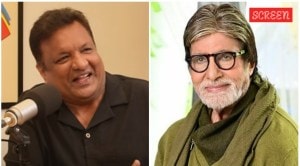In defence of these ties
One question that has dominated everyone’s thoughts is, should we expect any significant change in American policies towards India in c...

One question that has dominated everyone’s thoughts is, should we expect any significant change in American policies towards India in case the occupant in the White House changes? The simple answer to that question is an obvious no! For example, Vijay Thadani, CEO of the National Institute of Information Technology, is confident that regardless of who takes the White House, (the contentious issue of) “outsourcing is here to stay even if gets sugar-coated with a different name.” It is worth recalling that the Democrat administration under Bill Clinton had raised bilateral cooperation to new levels especially during and after the Kargil War in 1999. His visit the following year stamped the beginning of a new era. And the Bush administration took the process forward.
But we need to soberly remember that the overarching political relationship can be dented badly, if not reversed, not because of change of administration, but if that bilateral relationship is not anchored firmly in mutually understood and accepted national interests. There is a possibility, of course, that even without a change in the White House, the semantics, profile and what Ambassador Mulford calls “blips” may impact relations negatively. This is where Prime Minister Manmohan Singh’s statement during his US visit that “mutual trust is the key” assumes such importance. To build that trust further we need to look for galvanising steps to underpin bilateral engagement. We seem to be doing well in both respects, and hence the Next Steps in Strategic Partnership — even if most people in India tend to see the progress as too little and too slow. Certainly, an objective and honest assessment would indicate that there is a long way to go.
One area perceived as highly suited to building cooperation and trust is defence, or rather, to put it more accurately, the military-to-military relationship. While notable progress has been made in this regard, this cannot be the real driver for transformation of the relationship. For example, a host of factors like US non-proliferation concerns and national laws, denial of access to nuclear technology for peaceful purposes which may have no bearing on nuclear weapons, or Indian concerns about dependability of major weapons procurement from the US militate against any robust momentum. On the other hand, simple logic would indicate that this could be an early casualty due to other factors, as indeed happened to Pakistan more than once in spite of an alliance relationship and much deeper military-to-military cooperation for decades when the military was also ruling the country. Even we had started importing US radars, etc, and our fighter pilots were being trained in the US in 1964 before the arms embargo by the US because Pakistan invaded India!
It is interesting to remember that India and the US had signed an important MOU for transfer of sensitive technology (including super-computers) in 1984. And as Richard Armitage (currently US deputy secretary of state) had said at the fifth round of Indo-US Strategic Dialogue 10 years ago in Washington, the MOU had been negotiated and signed under the Indira Gandhi and Ronald Reagan regimes in spite of the Cold War being at its peak (when India was perceived as a Soviet ally and the Soviets were in Afghanistan). He then went on to ask why it could not move forward faster. One positive result of that meeting was that it led to the Agreed Minutes between the two countries in January 1995 during US Defence Secretary William Perry’s visit which established the joint Defence Policy Group. Unfortunately this did not move ahead for many years in spite of increasing military-to-military cooperation. We have witnessed better results since “nine-eleven” partly since the US navy was badly stretched and the Indian navy has been able to share the burden of patrolling the sea lanes. So a decade after Armitage’s famous statement, what should the two countries be looking at?
What is needed is a great deal of fresh thinking and innovation on both sides. For example, the original principle under which the Defence Policy Group was established was to strengthen the defence industry relationship. This has remained limited partly because the Joint Technical Group represented by DRDO on our side has tended to focus primarily on high-technology transfers. While we must keep seeking high technology, we must not ignore the importance of stronger ties at other levels and in other areas. For example, there are vast opportunities in India for manufacture and supply of military sub-systems and components, especially those for training, etc. Let’s not repeat mistakes like rejecting the offer of F-5 trainer manufacture in India as the AJT with latest systems in the late 1980s while pressing for the GE-404 engine for the yet to be designed LCA. Our desire for frontier technology access should not be at the cost of appropriate and workhorse technologies.
The example of automotive parts and their exports which are rapidly burgeoning is most telling in this regard. Similarly, multinational companies are investing in the expanding research and development centres in India. (For instance, 230 multinationals have arrived in India since 2001, and the outsourcing market for IT in India is expected to grow from $1.3 billion in 2003 to over $8 billion by 2010.) There is no reason why outsourcing in manufacturing and R&D for the vast range of military equipment and parts should not provide the impetus needed in bilateral relations. Private industry would have to lead in commodities like military parts and components, but the two governments would have to facilitate the process with policy changes wherever needed. The defence industry in India has been opened to the private sector, with 26 per cent foreign equity permitted. By itself this would not provide adequate results if we keep focusing only on high-technology and big-ticket weapons acquisition.
It is time, therefore, that a specific joint group on defence industry with membership from the private corporate sector (CII and FICCI from our side) is set up under the Defence Policy Group to facilitate the process and give it the necessary momentum.
Photos



- 01
- 02
- 03
- 04
- 05




























